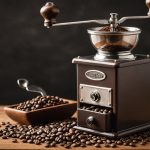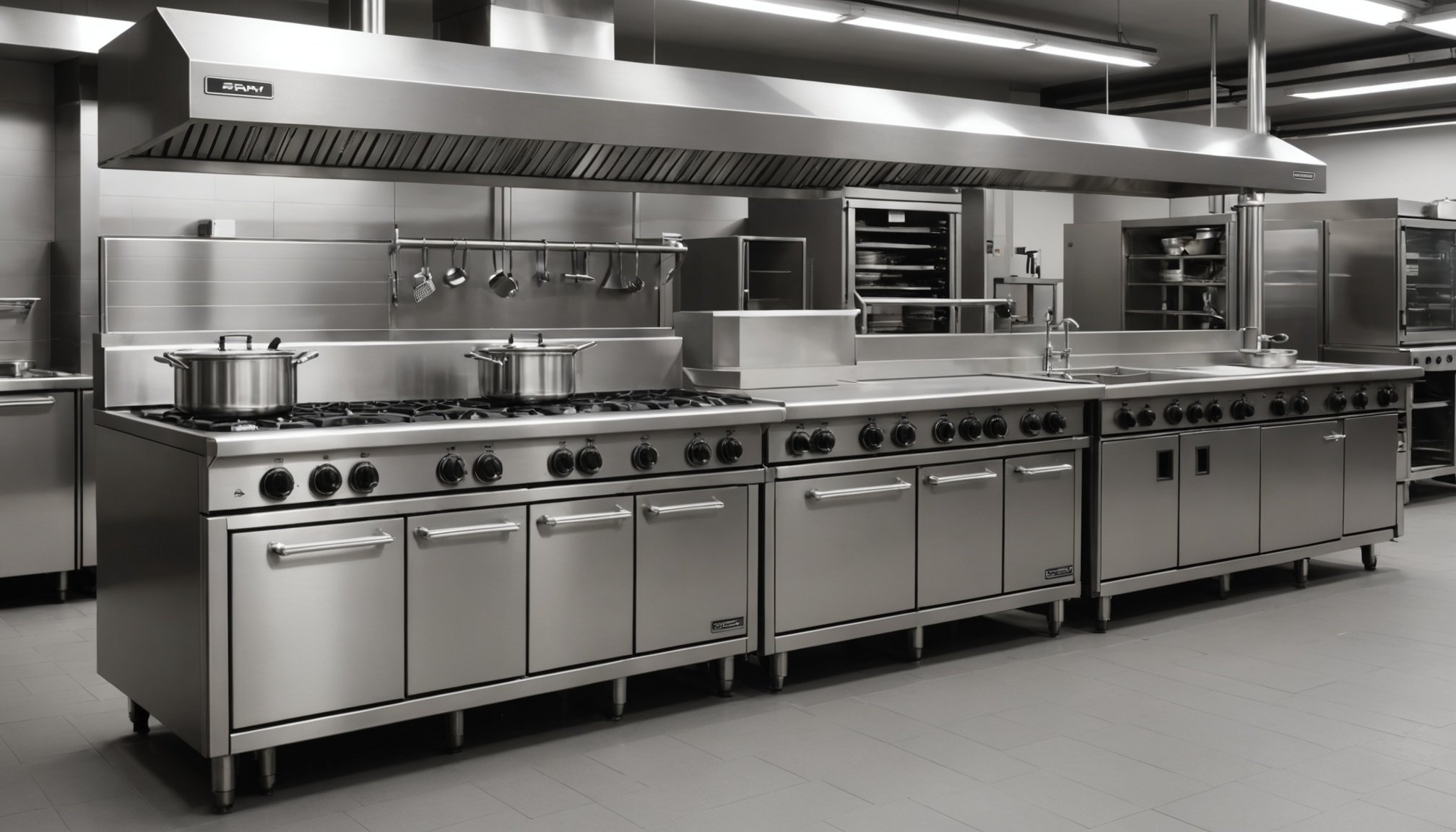Overview of Commercial Kitchen Equipment
Commercial kitchen equipment is fundamental for efficient and productive culinary operations. Essential equipment types include ovens, refrigerators, dishwashers, and ventilation systems. Each piece plays a critical role in maintaining the kitchen’s workflow and hygiene standards, which are crucial in a professional setting.
The importance of quality in commercial settings cannot be overstated. Investing in reliable and durable equipment assures consistent performance and reduces the risk of breakdowns that can halt operations. Quality equipment often comes from top-tier brands, known for their long-lasting products and excellent aftersales support.
Have you seen this : The essential handbook for selecting the ideal cast iron skillet for your uk culinary needs
While the initial investment in top-tier commercial kitchen equipment might seem high, it results in potential cost savings over time. UK savings can be considerable, as these brands offer energy-efficient models that reduce utility bills and lower maintenance costs due to their durability. Such investments contribute to long-term financial health, allowing more focus on enhancing culinary offerings and improving overall customer satisfaction.
In summary, selecting the right commercial kitchen equipment is integral to a successful business. The emphasis on quality ensures that the equipment will withstand the demands of high-volume use, promising efficiency, and reliability in dynamic kitchen environments.
Also to see : Creative pantry organization tips: space-savvy solutions for slim kitchens in the uk
Detailed Comparisons of Top-Tier Brands
Exploring the realm of robot hoovers necessitates understanding the array of brands and their offerings. Having a clear perspective on brand comparisons can guide you toward making a well-informed purchase. Let’s delve deeply into a series of comparisons between notable brands.
Brand A vs Brand B
When comparing Brand A and Brand B, consider the equipment reviews and product analysis as essential tools for discerning differences. Brand A tends to focus heavily on smart integration. This means their robot hoovers often feature compatibility with various smart home systems and advanced scheduling technologies. On the other hand, Brand B is lauded for its robust build quality and exceptional battery life, presenting a significant value for money for users who prioritise durability.
Brand C vs Brand D
Brand C and Brand D stand out in distinct ways through their product analysis. Brand C is particularly noted for its powerful suction capabilities and versatile cleaning modes, catering to homes with different floor types. Meanwhile, Brand D distinguishes itself with cutting-edge navigation systems and efficient obstacle avoidance, making it a top choice for cluttered spaces. Exploring these unique features can ensure that the choice aligns with user needs.
Brand E vs Brand F
Moving forward with Brand E and Brand F comparisons, both are praised in user satisfaction and performance reviews. Brand E tends to excel in affordability while maintaining a quality standard, perfect for budget-conscious consumers. Conversely, Brand F invests in premium features, offering exclusive innovations like automatic dirt disposal. This premium aspect, often reflected in their pricing analysis, caters to those seeking high-end technology.
Exploring Cost-Saving Opportunities
Navigating the sea of promotions and discounts can be your gateway to securing the best value options when purchasing equipment. With numerous deals sprouting throughout the year, staying attuned to current offerings becomes essential. It might seem daunting, but knowing what’s out there can lead to significant savings.
Finding energy-efficient models can lead to notable long-term savings. Initially, these models might appear more expensive, but their reduced energy consumption will reflect favourably on utility bills over time. Consider the potential of a small upfront investment leading to sustainable savings.
Looking to take advantage of discounts? Start by subscribing to newsletters from major retailers. These often feature exclusive promotions that aren’t advertised elsewhere. Additionally, leveraging financing options can ease the immediate financial burden. Some sellers offer interest-free payment plans, allowing you to spread the cost over several months without additional charges.
Consider these tips:
- Check out seasonal sales events which often present deep discounts.
- Engage with customer communities where members share exclusive promo codes.
- Evaluate bundle offers; buying several items together often unlocks reduced pricing compared to individual purchases.
Empowered with these insights, you can confidently pursue options that align with your budget and needs.
User Reviews and Experiences
Exploring user testimonials, ratings, and feedback offers a comprehensive view of popular robot hoovers. These insights reveal the satisfaction levels and experiences of those who have tried these robotic wonders themselves.
Top-rated Equipment by Users
Among the array of robot hoovers, certain models consistently receive high marks in user testimonials. Users often praise their advanced navigation systems and efficient cleaning patterns. Ratings frequently highlight the reliability of obstacle avoidance and battery longevity. These aspects are pivotal for those seeking convenience and dependability.
Common Issues and How to Overcome Them
Despite the many positive feedback comments, some users report issues. Common problems include technical glitches in app connectivity and trouble with thick carpets. To overcome these, users often recommend regular maintenance and software updates, which usually enhance performance and address connectivity issues.
Real-world Applications and Success Stories
Success stories within user testimonials abound, frequently mentioning features like scheduling and remote operation. Such features empower individuals juggling busy schedules, offering flexibility and ease. User feedback provides credibility to these success tales, encouraging others to make informed purchase decisions. Whether it’s tackling pet hair or simplifying daily chores, real-world applications showcase the transformative impact these devices have in everyday life.
Buying Guide for Commercial Kitchen Equipment
Purchasing commercial kitchen equipment requires thoughtful consideration of various selection criteria to ensure your kitchen operates efficiently. Here’s what you need to know to make an informed decision.
Efficiency is paramount in any commercial kitchen setup. Equipment that saves time and energy will not only speed up service but also reduce operational costs. Look at the energy ratings of appliances to choose those that offer optimal performance without excessive electricity use.
Deciding between manual and automated equipment is another crucial buying tip. Automated machinery can significantly enhance productivity and consistency in kitchens with high-volume demand. However, manual equipment, though labour-intensive, might be more suitable for smaller operations or for those valuing a traditional approach.
Warranty and customer service play a critical role in the buying process. Equipment investment is substantial, and reliable after-sales support can make a significant difference when issues arise. A comprehensive warranty ensures that you’re covered, protecting your investment from unforeseen malfunctions or wear and tear.
When equipping a kitchen, ensure that every purchase aligns with your operational needs and future growth plans. Thus, addressing the key factors and understanding the distinctions between manual and automated options will support making the most efficient and beneficial decisions for your business.
Tips for Maximizing Efficiency and Cost-Effectiveness
Achieving efficiency and cost-effectiveness in the kitchen is crucial for a seamless operation. One method is implementing smart layout and design strategies. Ergonomic placement of equipment can significantly enhance workflow, ensuring that everything is within reach. By prioritizing accessibility, you not only save time but also minimize unnecessary movements, thereby increasing productivity.
Layout and Design Strategies for Kitchens
Workflow optimization is enhanced by strategic kitchen layout. Consider the “kitchen triangle” principle, where the stove, refrigerator, and sink form a triangular path. This minimizes walking distances and allows for a more efficient work environment. Additionally, open shelving can reduce retrieval time, helping staff access items quickly and easily.
Maintenance Practices to Extend Equipment Life
Regular maintenance is essential for both efficiency and cost-effectiveness. Scheduled servicing can prevent breakdowns, reducing downtime and costly repairs. Establishing a checklist for daily cleaning and periodic equipment inspections can significantly extend the life of your kitchen tools and appliances.
Training Staff to Use Equipment Effectively
Proper training ensures that staff can operate equipment safely and efficiently. Familiarity with equipment contributes to smooth workflow and can help identify potential issues before they escalate. Training sessions should focus on practical use, safety procedures, and tips for optimal operation, fostering a proactive approach.











